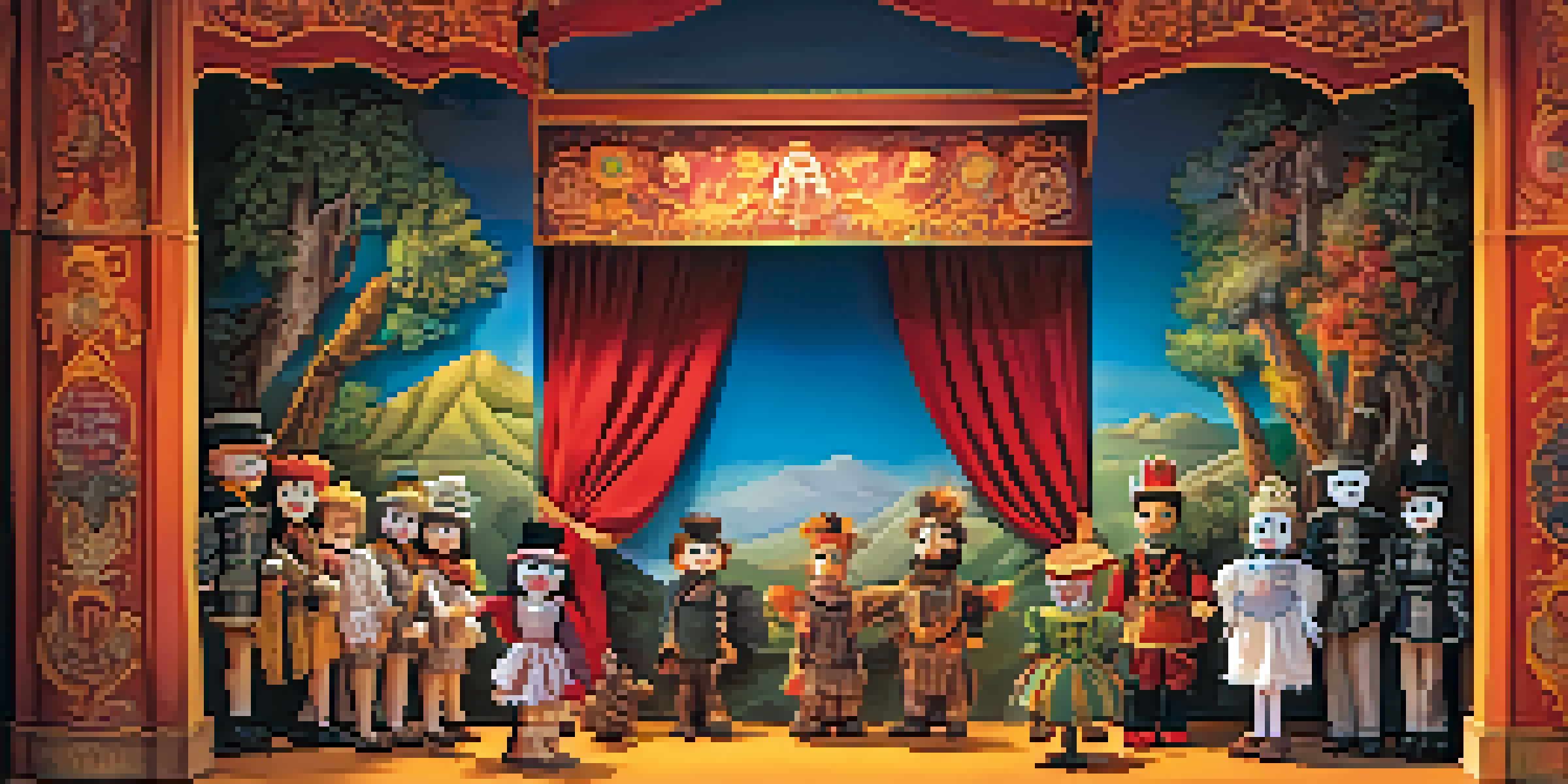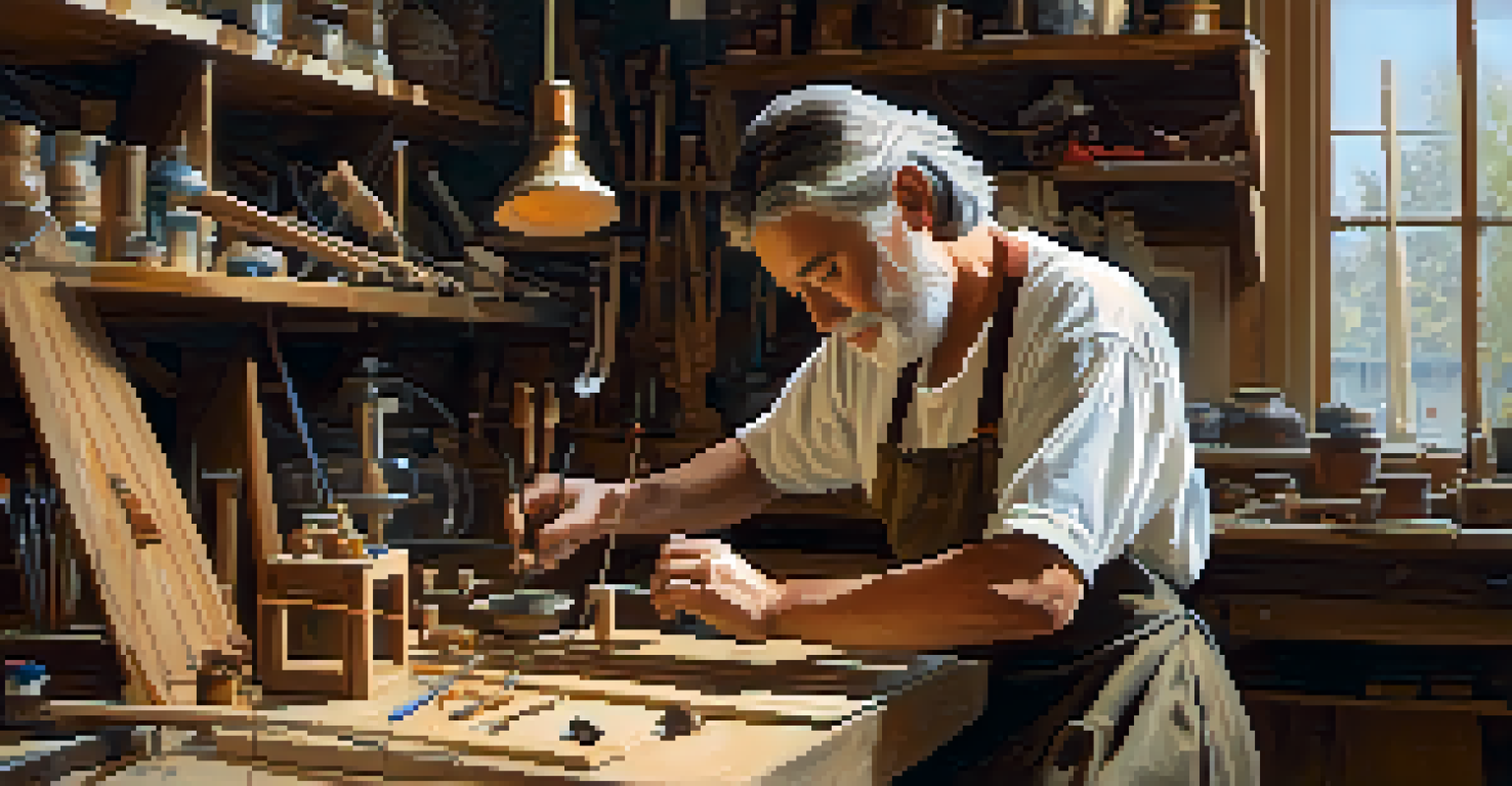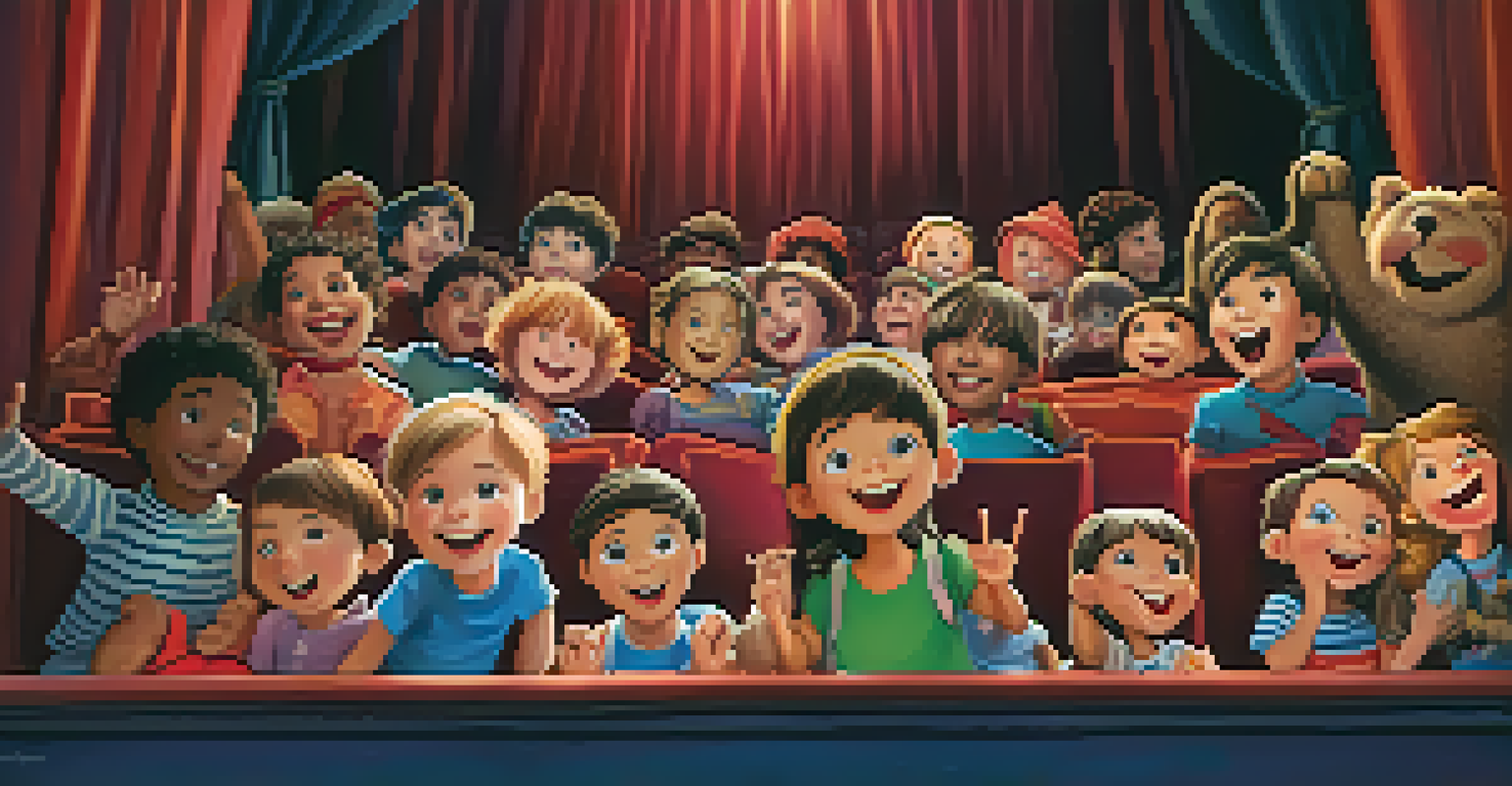Exploring the World of Puppet Theater: A Unique Art Form

The Rich History of Puppet Theater Across Cultures
Puppet theater boasts a rich history that spans across various cultures and eras. From ancient Egypt's shadow puppets to the intricate marionettes of Europe, this art form has captivated audiences for centuries. Each culture brings its unique flair, showcasing local stories, traditions, and humor through puppetry.
Puppetry is a form of expression that transcends language and culture, bringing people together through the shared experience of storytelling.
In Asia, puppet theater has deep-rooted significance, with styles like Indonesian Wayang Kulit and Indian Kathakali reflecting spiritual narratives. These performances often blend music, dance, and storytelling, creating a holistic experience for viewers. The diversity of techniques and themes makes puppet theater a fascinating study of cultural expression.
As we explore the history of puppet theater, we see how it has evolved with technology and societal changes. While the core essence remains the same, modern interpretations often incorporate new materials and themes, making the art form relevant to contemporary audiences. This evolution highlights the adaptability and enduring appeal of puppetry.
The Different Types of Puppetry and Their Unique Styles
Puppetry comes in various forms, each offering a distinct style and experience. Some of the most recognized types include hand puppets, marionettes, shadow puppets, and rod puppets, each with its own set of techniques and storytelling methods. For instance, hand puppets are often simple yet effective, allowing for lively interactions and humor.

Marionettes, on the other hand, are controlled by strings and require a higher level of skill to manipulate. Their intricate movements can convey a wide range of emotions, making them a favorite for dramatic performances. Meanwhile, shadow puppets create enchanting visuals, often used to tell stories with a mystical touch, engaging audiences in a unique way.
Puppetry: A Cultural Tapestry
Puppet theater reflects diverse cultural narratives, showcasing unique stories and traditions from around the world.
Each type of puppetry plays a crucial role in its respective cultural context, influencing how stories are told and perceived. By understanding these differences, we gain a deeper appreciation for the artistry involved and the ways puppetry connects with audiences. The choice of puppetry style often reflects the themes and emotions of the story being told.
The Creative Process Behind Puppet Design and Construction
Creating a puppet is an intricate process that combines artistry, engineering, and storytelling. It begins with conceptualizing the puppet's character, which involves sketching designs that reflect personality and purpose. This stage is crucial, as the puppet's design will influence how it interacts with the audience and the emotional impact it creates.
The art of puppetry is not just about the puppet, but the storytelling and connection it creates between the performer and the audience.
Once the design is finalized, the construction phase begins. Puppeteers often use various materials, such as wood, fabric, and plastic, to bring their creations to life. Each material offers different advantages: wood provides durability, while fabric allows for expressive movement. The choice of materials can greatly affect the puppet's overall appearance and functionality.
Finally, the puppeteer must consider how the puppet will be manipulated during performances. This includes designing mechanisms for movement, such as rods or strings, and practicing the techniques required to animate the puppet effectively. The entire process is a labor of love, resulting in a unique character that resonates with audiences during performances.
The Role of Puppetry in Education and Social Change
Puppetry is not just a form of entertainment; it also serves as a powerful educational tool. Many educators use puppets to engage students, making learning more interactive and fun. Through storytelling, puppetry can simplify complex subjects and help convey important life lessons, making education accessible and enjoyable for learners of all ages.
Moreover, puppetry has been utilized in various social movements to raise awareness about critical issues. By addressing topics like mental health, environmental conservation, or social justice through puppetry, artists can reach diverse audiences and spark meaningful conversations. The visual and engaging nature of puppetry makes it an effective medium for advocacy.
Puppetry's Role in Education
Puppetry serves as an engaging educational tool, simplifying complex subjects and fostering important life lessons.
The impact of puppetry in education and social change is profound, as it encourages empathy and understanding. By presenting real-world issues through relatable characters, puppeteers can foster a sense of connection and inspire action within communities. This underscores the potential of puppetry to drive change and promote learning in innovative ways.
Famous Puppet Shows and Their Cultural Impact
Throughout history, several puppet shows have left a lasting legacy on the art form and culture as a whole. For instance, 'The Muppets' revolutionized television puppetry, introducing a new generation to the charm and humor of puppet characters. Their blend of comedy and music captivated audiences, showcasing how puppetry can transcend age barriers.
Another significant example is the Indonesian Wayang Kulit, which has been recognized by UNESCO as an Intangible Cultural Heritage. This traditional shadow puppet theater not only entertains but also educates audiences about moral values and cultural history. Its deep storytelling roots have influenced various forms of art, demonstrating the profound cultural significance of puppetry.
These iconic shows and performances illustrate how puppetry can shape cultural narratives and connect diverse audiences. By examining their impact, we can appreciate the art form's potential to influence society, highlight important issues, and create memorable experiences that resonate across generations.
Modern Innovations in Puppet Theater: Technology Meets Art
Today, puppet theater continues to evolve, thanks to modern technology and innovative techniques. Many puppeteers are incorporating multimedia elements, such as projections and digital effects, to enhance their performances. This fusion of technology and traditional puppetry creates immersive experiences that captivate audiences in new ways.
Additionally, advancements in materials and design techniques allow for more versatile and expressive puppets. For example, 3D printing has opened up new possibilities for creating intricate puppet designs that were once impossible to achieve. This accessibility to new tools is empowering artists to push the boundaries of creativity within the art form.
Modern Puppetry Embraces Technology
Innovations like 3D printing and multimedia elements are transforming puppet theater, enhancing creativity and audience engagement.
As puppetry embraces modern innovations, it also raises interesting questions about the future of this art form. How will technology shape storytelling in puppet theater? Will the essence of puppetry change as we incorporate more digital elements? These questions invite ongoing exploration and discussion as the art of puppetry continues to adapt and transform.
Getting Involved: How to Experience Puppet Theater Yourself
If you're intrigued by the world of puppet theater, there are numerous ways to immerse yourself in this enchanting art form. Attending live performances is a fantastic starting point, as it allows you to witness the magic of puppetry firsthand. Many local theaters and festivals showcase a variety of styles, offering something for everyone.
For those looking to dive deeper, workshops and classes are available where you can learn the basics of puppet making and manipulation. These hands-on experiences not only provide valuable skills but also foster a deeper appreciation for the artistry involved in puppetry. You'll likely leave with newfound respect for the craft and perhaps even a puppet of your own creation!

Lastly, exploring online resources, such as videos and documentaries, can provide insight into the world of puppetry. Many artists share their techniques, performances, and stories online, making it easier than ever to connect with this unique art form. By engaging with puppetry through various channels, you can fully appreciate its beauty and complexity.